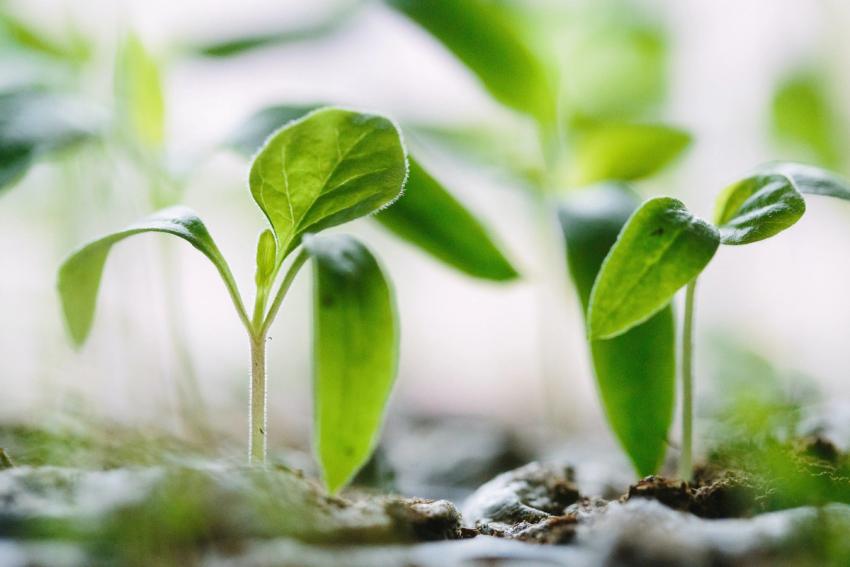68 Best Tips for Sustainable Living (That Make an Impact in 2023)

By Wildr Editor

If you’re anything like me, you’re always looking for ways to improve your lifestyle and habits. You want to do more and better when it comes to sustainable living.
But what is sustainable living?
According to Wikipedia,
Sustainable living describes a lifestyle that attempts to reduce the use of Earth's natural resources by an individual or society. It is often called "earth harmony living" or "net zero living".
The reality is that we live in a world where we need “stuff”, and we always will. Instead of shaming ourselves for not doing enough, let’s focus on making better decisions today.
What are the best tips for sustainable living?
Here is a list of the best practical ideas for creating a more sustainable lifestyle.
Awareness
1. Learn about sustainability.
This article is a first step. Start here, and ask a lot of questions. Ask your family, friends, co-workers, teachers, neighbors, politicians. Talk about sustainability and start conversations. It’s the only way to live it. Or (shameless plug) take a shortcut, and subscribe to Wildr’s newsletter for all you need to know.
2. Vote.
Vote for the politicians who are key change makers, who support initiatives to fight climate change.
Here’s reality summed up by World Resources Institute:
"Black Americans are 75% more likely than white Americans to live near commercial facilities that produce noise, odor, traffic or emissions. In Flint, Michigan, it was mostly Black children who consumed lead-laced water when local officials tried to save money by switching its water source."
In order to achieve environmental justice, our voices must be heard, and the best way to achieve that is by using your voting rights to elect the people who will hear them.
3. Spend quality time with family & friends.
What does this have to do with sustainability? Instead of watching TV (or your phone) again, you could play board games, or just have a conversation. Not only do you increase the quality of time you spend with your family, but you save energy in small, but not insignificant ways.
4. Be in nature.
Let it remind you that the earth is worth saving. My body just feels better when I’m in the mountains, surrounded by trees.
One study published by Journal of Positive Psychology proves that even five minutes can reduce stress and enhance your mood. One day at the park might not make a big difference for the planet, but it’s the compounding habits that affect our lives.
5. Make eco-conscious friends.
Surrounding yourself with people who know more and are also trying to make decisions based on sustainability will give you the support you need for the right mindset.

6. Check out this carbon footprint tool by WWF.
You can see your carbon footprint quantified by this small quiz.
7. Read about Climate Change.
News and magazines are covering climate change in more depth and it’s important to keep track of how we’re doing as a planet. (Just in case we need to ditch Earth and get to Mars.)
8. Question your buying motivation.
This is a big one. WWF states,
"The biggest driver of environmental degradation is the fact that we’re consuming resources at an unsustainable rate, and therefore our production of goods is increasing."
Next time you want to buy that pair of sweats you already own in a different color, ask yourself if you really need it, or does it stand for something else — maybe an impulsive buy after a bad day?
Health
9. Don’t avoid palm oil.
Palm oil factories do destroy the habitat of endangered species like rhinos, tigers, and elephants, which is why there’s been a boycott movement to avoid it at all costs. But avoiding palm oil will force companies to shift and pick an alternative that might have a worse environmental impact.
What you could do instead is look for the RSPO label, which certifies that the palm oil was made in a sustainable way.
10. Walk 30 minutes a day.
Walking instead of driving can help reduce air pollution that claims more than 500,000 deaths a year, according to World Health Organization. It reduces other problems like greenhouse gases, traffic accidents, and mortality risk by 10% for 30 minutes of walking.
Lucky for us, we have a sweet mascot puggle named Oscar, who makes sure we get our daily walk in everyday, rain or shine.
11. Bike to work.
The research above from WHO applies to both 30 minutes of walking or 20 minutes of cycling. They also point to solid evidence that bike commuters have lower cancer-related deaths by 30%.

12. Exercise outdoors.
Until recently, the pandemic changed the game of exercise to remote and outdoors. As warmer weather approaches, it’s not a bad idea to replace the gym membership that you pay for but may or may not use every month. Save electricity and run outdoors instead of using the treadmill. After all, it’s free.
13. Choose natural deodorant.
As a core function in our bodies, we’re supposed to sweat! Choosing natural deodorant will rebalance the bacteria in your armpits and stop over-producing the odor. Not only is it healthier, but more eco-friendly.
14. Apply natural sunscreen.
You might want to switch to a mineral sunscreen with active ingredients zinc oxide and/or titanium dioxide which provide effective protection from UVA and UVB radiation without the toxic ingredients. We recommend avoiding chemical sunscreens with oxybenzone because it can mess with your skin and your hormones. Ew.
15. Use natural makeup.
Not all makeup sits right with us, as some of us have sensitive skin. Makeup with natural ingredients is not only eco-friendly but doesn’t include harsh chemicals. One of our favorite moisturizers is cocoa butter, which include fatty acids that hydrate your skin.
Fashion
16. Refuse fast fashion.
Fast fashion is a method for retailers to make as much clothing as fast as possible, often producing low quality garments with synthetic materials, to offer the cheapest clothing to the consumer. This perpetuates the cycle of low wages workers, toxic ingredients, and an unsustainable business model. Refuse it, and brands will need to change.

17. Create a minimalist capsule wardrobe.
Redesign your closet by adopting a minimalist mindset and include fewer but higher quality pieces that look and feel good, cover all seasons, and are made from sustainable resources.
18. Choose vegan leather.
I was skeptical of vegan leather at first, but after purchasing several vegan handbags, I’m happy to share that quality vegan leather bags exist as long as you do your research. It also doesn’t mean you need to give up your Chanel and Prada — but mindful consumption is key to sustainability.
19. Do your research.
Some materials used in fashion are better than others. Products made from PVC (polyvinyl chloride) and PU (polyurethane) are alternatives to traditional leather that aren’t environmentally friendly. But emerging brands are using innovative sources from nature like mushrooms, apple peels, coffee beans, pineapples, and cork to create new designs.
20. Practice mindful shopping.
It can be hard to pick one summer dress when you want it in three different colors. Mindful shopping simply means we are conscious of our own consumption habits. Are you really going to wear all three colors this season? If not, buy the one you can’t live without and pat yourself on the back for saving some money and making a small impact on the planet.
21. Be Patient.
With yourself — it’s okay to indulge sometimes and buy yourself a treat that doesn’t seem to fit in with a “sustainable” lifestyle. Sustainability is about living a balanced life, not depriving yourself. It can also help to be patient with brands: some major retailers aren’t 100% sustainable (no company is unless they’re invisible), but there are many more that want to do better, and are experimenting with new fabrics and manufacturing processes.
22. Support sustainable fashion brands.
There aren’t enough brands out there doing the right thing, but Wildr did the research for you by evaluating hundreds of brands and products that are clean, functional, and beautiful.
Reuse & Recycle
23. Bring your thermos or mug to the coffee shop.
Maybe it’s a little inconvenient, but it’s reusable and definitely worth it if you’re close to home and don’t mind the extra pound in your bag.
24. Attempt to repair, first.
Try not to give up the first time something breaks or rips. I bought a basic sewing kit to learn how to patch holes and reattach buttons, instead of immediately throwing out the shirt and buying a new one.
25. Reuse shopping bags.
The less we need plastic bags from our grocery stores, the less stores have an incentive to make them. We use ours for picnics, packing dog things, transporting food, even clothing donations to the Salvation Army.
They don’t need to be ugly or display brand names, either. Shutterfly has great designs to make your own grocery bag, with custom pictures of your dog, friends, or a quote.
26. Borrow and share.
There’s less waste, less clutter, and something about sharing an item that makes it more valuable. And there’s also car pooling.
27. Recycle the right way.
Less than 8% of plastics are recycled in the U.S, according to USA Today. Learn about recycling and make sure you’re not adding to contamination, by emptying and cleaning your containers first and ensuring they’re in the right recycling bins.

28. Donate unused items.
If you want to stop continuing the cycle of unsustainable waste, donate products you didn’t use so someone else can use them.
Home
29. Have plants in your home.
Plants help us breathe better (all that O2!) and serve as a good reminder that nature is part of our home. Even just looking at images of nature can improve your mental health. Wall art is another option if you don’t want to commit to caring for plants (let’s face it, sometimes they’re harder to keep alive than pets).
30. Turn off the AC.
It turns out that leaving the TV and lights on all day doesn’t consume nearly as much energy as leaving your AC on at all hours.
According to “The Case for Fans vs. Air Conditioners in NYC” by StreetEasy, a window unit AC can cost over $50 per month, as opposed to $1.20 for a ceiling fan. You can save hundreds of dollars every year by turning off your AC when no one’s home. That’s a whole lotta oat milk lattes (in your thermos, of course).
31. Use less plastic (in general).
This one might sound obvious, but it’s harder than it seems. Make the decision to ditch plastic where it makes sense in your life.
32. Switch your lightbulbs out to LED.
LEDs use less energy by 80% compared to incandescent lightbulbs, and word on the street is that you save a ton of money in the long run.
33. Wear layers and reduce your heat.
It’s best to use your judgement here, but the perfect seasons to do this are spring and fall, the in between seasons of scorching summers and freezing winters in NYC.
34. DIY projects.
I’m in awe of people who make their own natural products like soap, lotion, candles, and cleaners. There are a ton of Pinterest ideas and recipes that aren’t just good for you, but for the environment.
35. Use glass containers for food.
Compared to plastic containers, glass is by far superior for food storage. It’s non-toxic, more durable, cleans better in the dishwasher, and better for your health.
36. Ditch single-use plastics.
Single-use plastics include straws, plastic cutlery, and soda bottles. Not only do they take an enormous amount of energy and resources to produce, but continue the cycle of our throw-away culture. Live in the city and order from DoorDash or Seamless? Opt-out of plastic utensils. Simple, but effective.
37. Invest in reclaimed wood furniture.
Reclaimed wood reduces the impact of deforestation by being recycled and reused. Reclaimed wood furniture is more expensive, but the quality is premium and can look pretty cool, too.

38. Insulate your windows and doors.
Leaking air is big reason for why the AC or heating system is turned on to the max or longer than it needs to be. Insulation of your home will help get rid of drafts and conserve energy.
39. Replace paper towels with dishcloths.
This goes back to reuse and recycle. You can change them daily and they’ll last a long time.
40. Dry your laundry on a rack.
If you’re not in a rush, dry your clothes the old fashioned way. It’s a great way to prolong the life of your clothing so that they last longer and don’t shrink.
Food & Water
41. Save water.
This is a great short article by the balance small business for tips on how to save water by something as simple as changing your shower head.
42. Check your fridge.
At the end of the week, instead of throwing away leftovers, see if you can come up with 1-2 more ways to use each ingredient or food. One of my friends likes to make banana nut muffins with her unused, overly ripe bananas at the end of the week.
43. Eat more fruits and greens.
By eating more fruits and vegetables, not only are you getting healthier, but there’s less room for junk food and less room for meat. Finally, a real reason to eat healthier...
44. If you have a pet, try natural dog food.
We’ve tested a ton of dog food brands for our dog Oscar because of his food allergy that we can’t seem to identify. After years of trial and error, we’ve finally found that natural food works best for him - without the itchiness, ear scratching, and vomiting, all common symptoms of food allergies.

45. Buy your produce from local farmer’s markets.
Because our bodies deserve the fresh, local, organic, healthy food that’s also sustainable and supporting ethical businesses.
46. Grow your own herbs.
It was a huge trend during the pandemic so we know it’s possible to grow your own little garden even if you live in the city. Basil, parsley, oregano, and mint are some herbs you can grow from a mini garden right in your apartment.
47. Cut back on meat.
I grew up eating meat and despite my attempts to eat less, I’ll still have a nice steak once in awhile. But I can’t ignore this glaring study illustrated by Culinary Schools.org:
"If every American dropped one serving of chicken per week from their diet, it would save the same amount of CO2 emissions as taking 500,000 cars off the road."
48. Try plant-based meat.
Not exactly the real thing, but tasty in its own right. And it could be a healthier option for you depending on what you’re looking for in your own diet and nutrition needs.
49. Compost your food waste.
We can reduce up to 30% of our trash in landfills by composting our food waste, repurposing it into fertilizer, according to the EPA.
You can compost eggshells, tea bags, nut shells, shredded paper, hair and fur, and fireplace ashes. Who knew that the hair strands in our shower drains are recyclable?
50. Meal Plan.
You don’t want to compost, maybe it’s too much work. You can still reduce food waste just by thinking ahead. Meal plan, meal prep, give yourself the right portions so you don’t have leftovers, then freeze the rest.
51. Cook more, takeout less.
This makes sense if you can plan ahead and make only what you can consume, reducing your waste. The USDA estimates that 30-40% of the nation’s food supply is wasted, which is about 133 billion pounds of food. That’s a jaw-dropping number.
Social Responsibility
52. Volunteer at your local non-profit.
Sustainability could come in the form of your time and generosity to help pick garbage off our parks and oceans, or other ways to volunteer. By giving yourself to the cause, you’re paving the way as a trailblazer for a more sustainable future.
53. Volunteer through your job.
Many companies have days or events where employees can choose to dedicate their time for volunteer initiatives like planting trees. Ask your HR department if a program like this exists and sign up, or better yet, talk to them about starting one if it doesn’t already exist.
54. Pay attention to eco friendly packaging.
This is just another way of rethinking the brands that you support. Aside from their product, you can tell a lot about a company by their packaging. Are they made with recyclable material or six types of plastic?

55. Tell people about what you learn.
Sustainability relies on everyone to move as a united front, to combat climate change, to make better buying decisions, to find alternative products and services. If you learn something new that might help someone else, you’re doing the world a favor by sharing it!
Travel
56. Support domestic travel.
Although most people dream about traveling to an exotic (almost always international) place, there are so many great gems near where you live if you just search for it. You’d be surprised at how much beauty you can find closer to home, even only a couple of hours away.
57. WOOF.
World Wide Opportunities on Organic Farms. You can still practice sustainability while traveling abroad by working at a farm in exchange for a place to sleep and eat. In my case, I trained grape vines during the day and drank organic wine at night in Italy (it was as good as it sounds).
58. Pack light.
Trust me, one carry on is enough for a weekend, or a month away. The more luggage a plane carries, the heavier the cargo, and more fuel is needed.
59. Avoid tourist traps that include animals.
As enticing as it may be to go to the cat cafe in Japan, or ride on an elephant’s back in Vietnam, be aware that animals may be in distress, or even abused. It's not always apparent, so do your research.
60. Stay at sustainable hotels.
Look for the Green Key certification, which awarded 3,600 hundred hotels in 60 countries for environmental responsibility and sustainability.

Technology
61. Transition to remote work.
Now more than ever, remote work as a part or full-time job is a possibility for many people. Find a job that adopts a hybrid or 100% remote work business model as an investment to their employee’s quality of life and environmental impact.
62. Unplug the electronics you’re not using.
Unplugging will not only save you money and conserve energy, but also prevent fire hazards and accidents.
63. Install solar thermal systems.
Lower electric bills, sustainability, and increased home value make solar panels worth it in the long run. Although I live in an apartment in the city, I was interested to learn how it worked.
64. Go paperless.
In this day and age, almost every major company is switching to paperless. Not only is it better for the environment for obvious reasons, but it’s just easier and seamless. Most of the mail I get now is junk. What can you unsubscribe to? Where can you go the paperless route?
Finances
65. Apply for a sustainable finance job.
More corporations are paying attention to the demands of younger consumers for a sustainable future, and adding corporate sustainability departments with jobs in consultancy and data analysis. This is still a new field, but an exciting one that has huge potential to realign our priorities from profit to planet.
66. Renovate your home with a green loan.
If you want to renovate your home to make it more energy efficient (i.e. installing solar panels), you can take out a green loan. If you’re dreaming about that Mercedes-Benz EQS, a top tier luxury electric car, you can take out a green auto loan.

67. Apply for a green credit card.
For every purchase you make, the credit card company with this initiative will plant trees or donate a percentage to combat climate change.
Last but not least…
68. Leave the guilt behind.
No one is perfect. Even our seemingly perfect, composting, frugal, vegan neighbor occasionally uses a plastic bag for her needs. There’s no way to erase the damage we’ve already caused to our planet, but we can make mindful decisions on what we buy, how we consume, and how we discard things.
Always remember that a true sustainable lifestyle is a balanced one.



